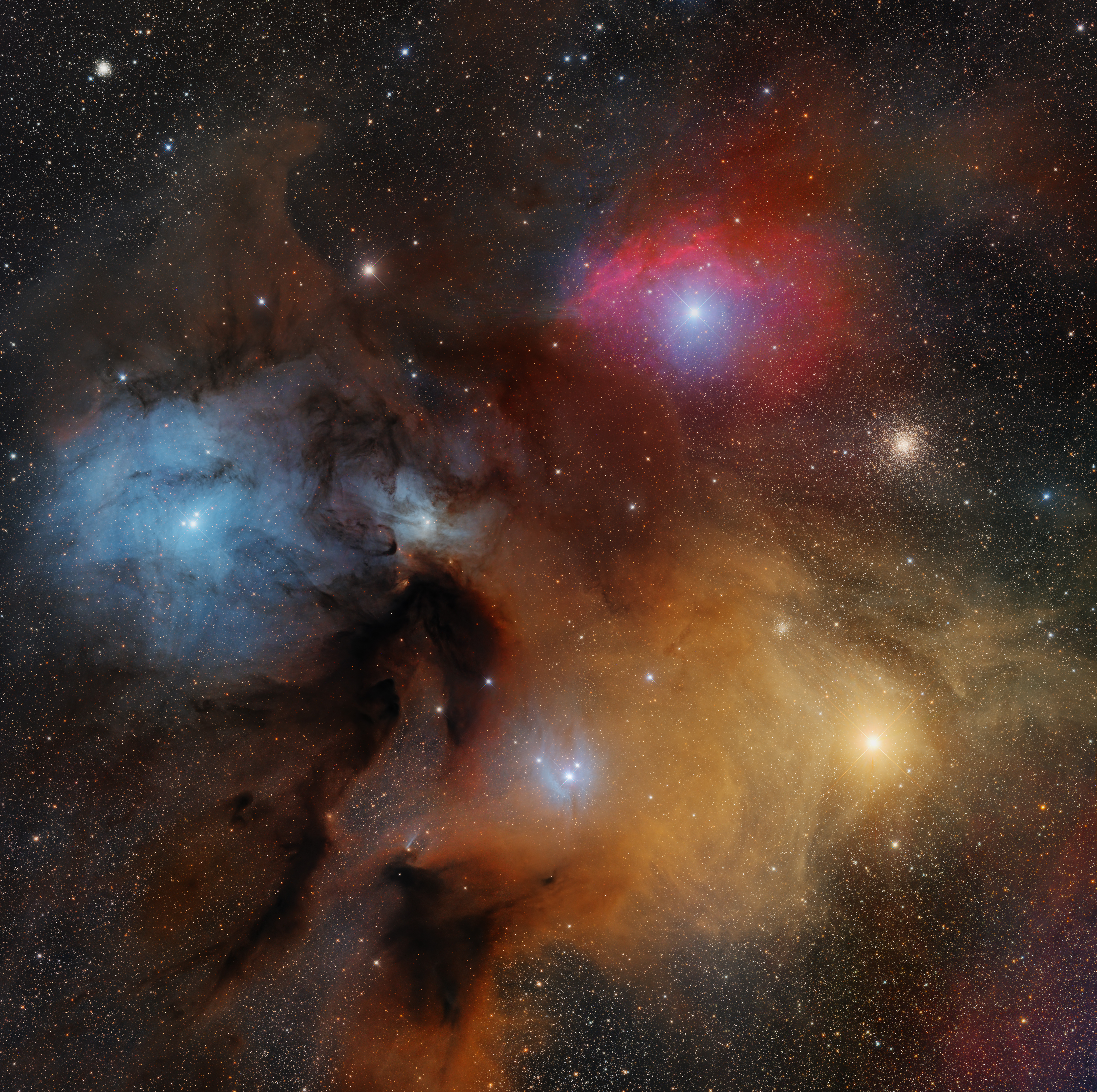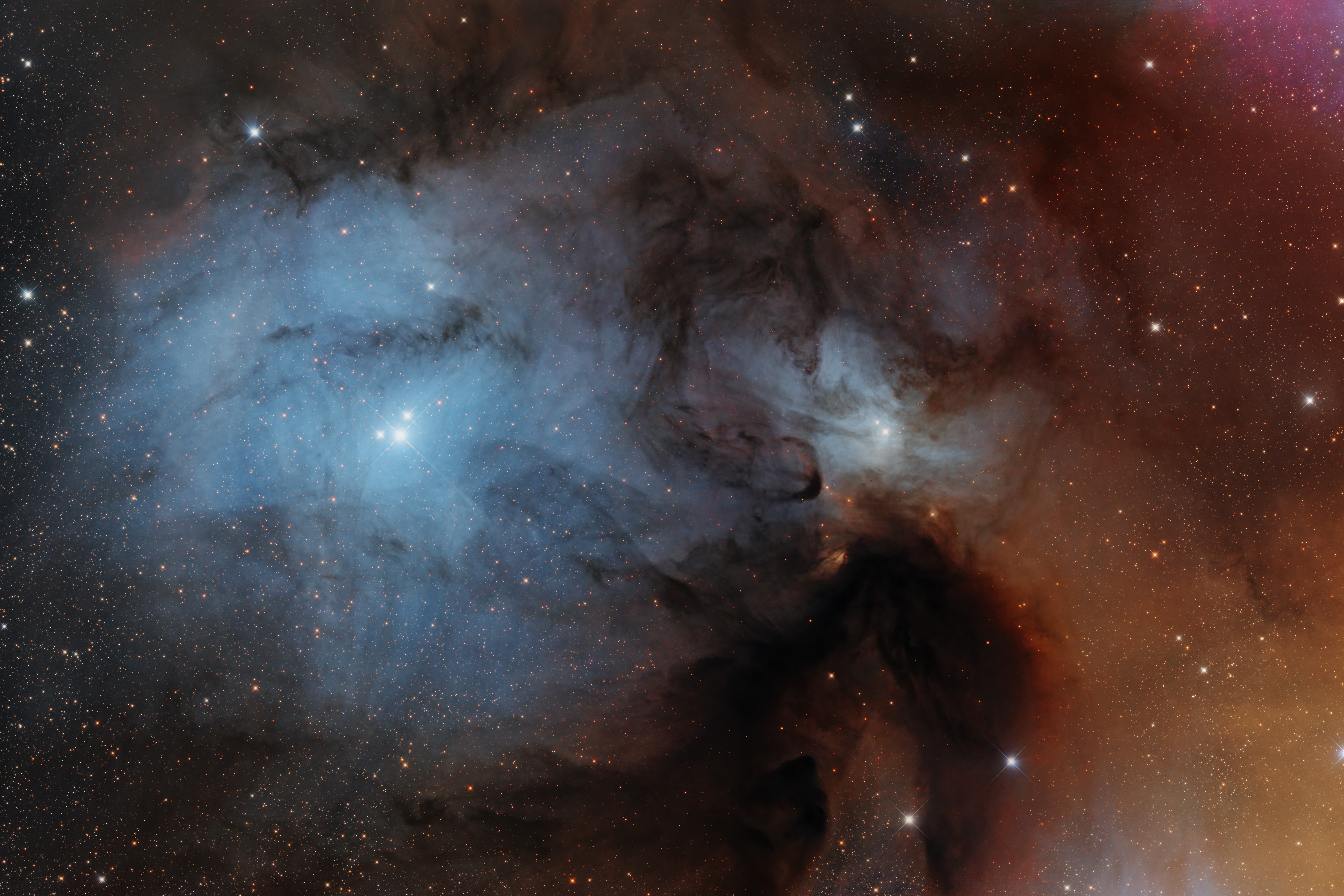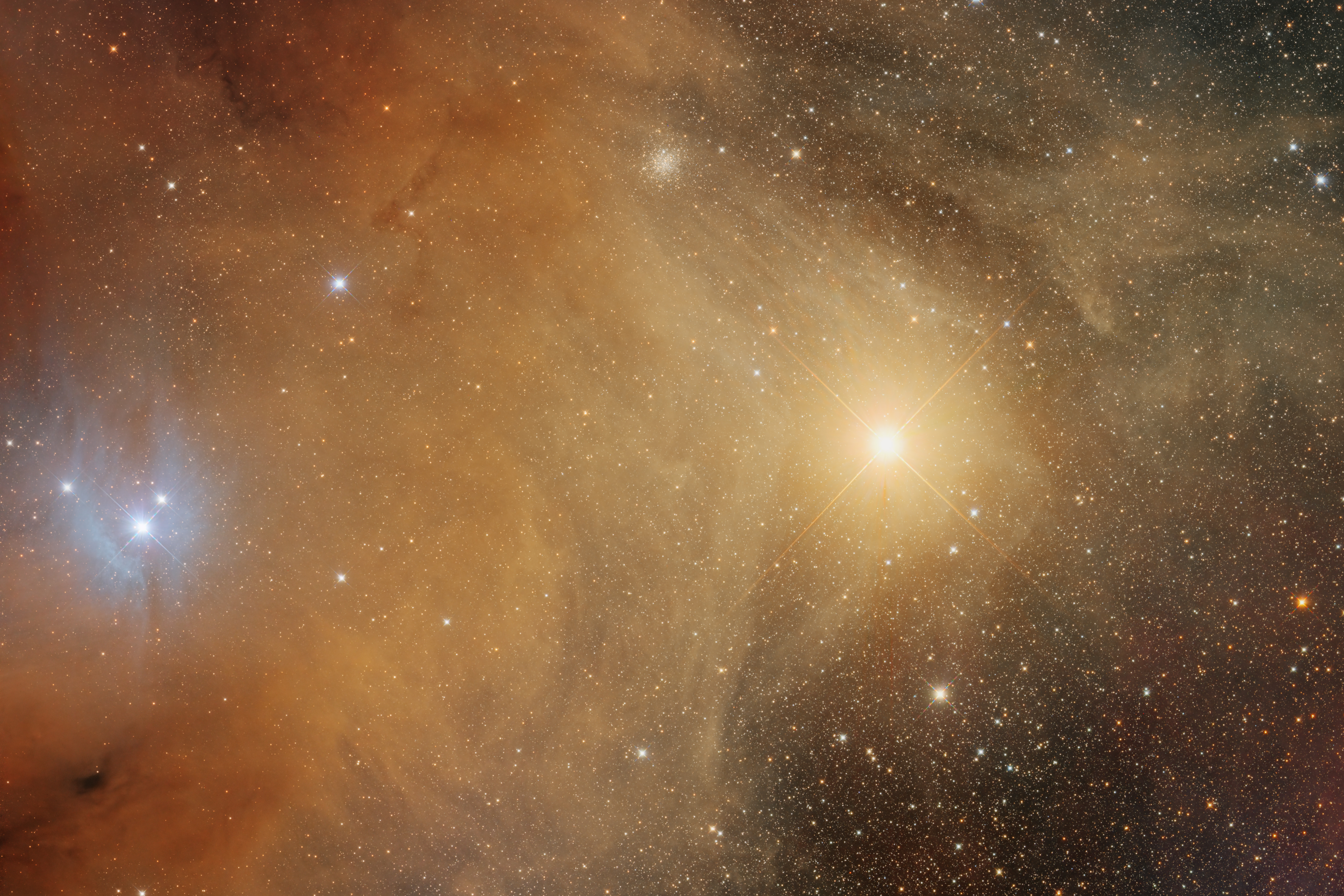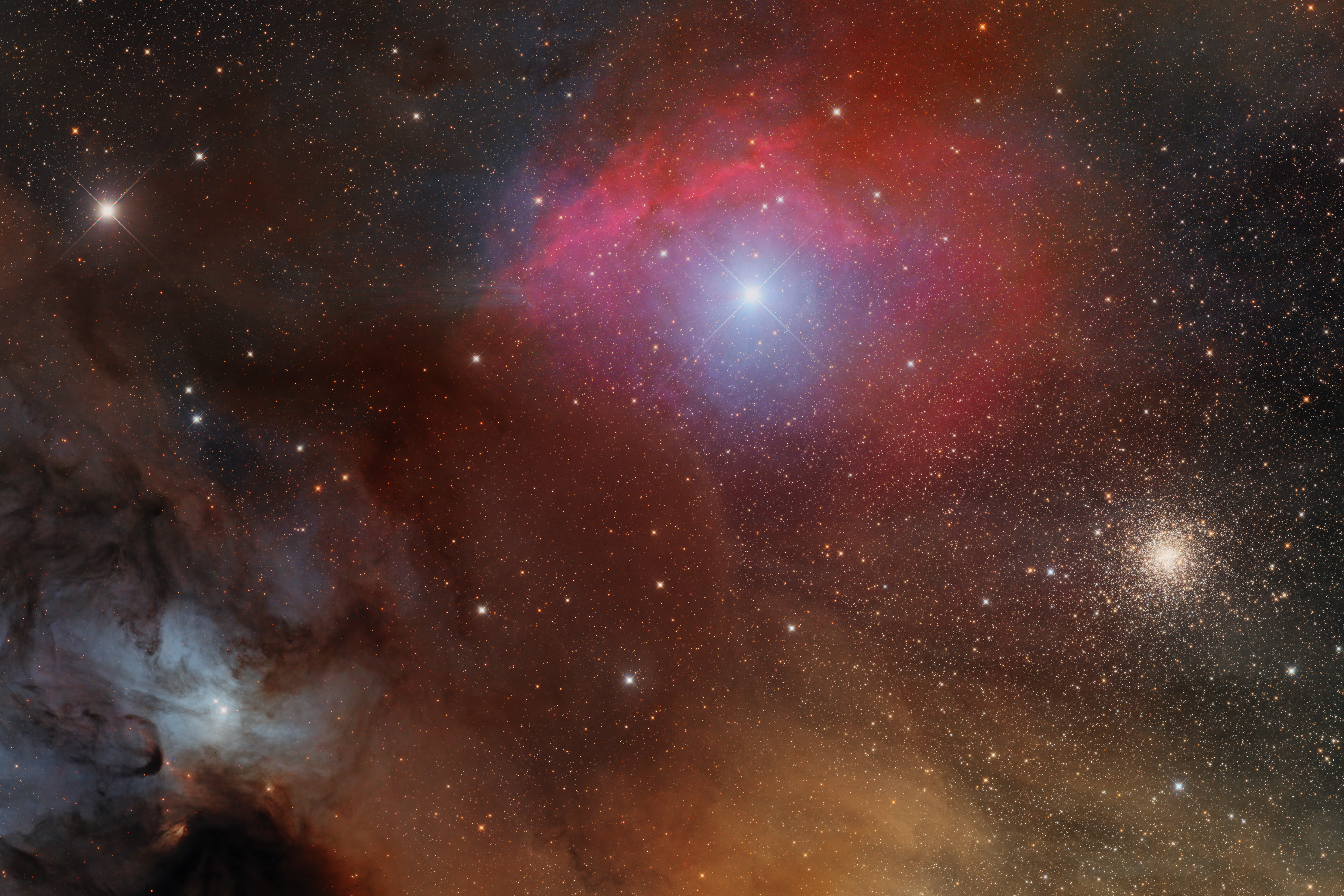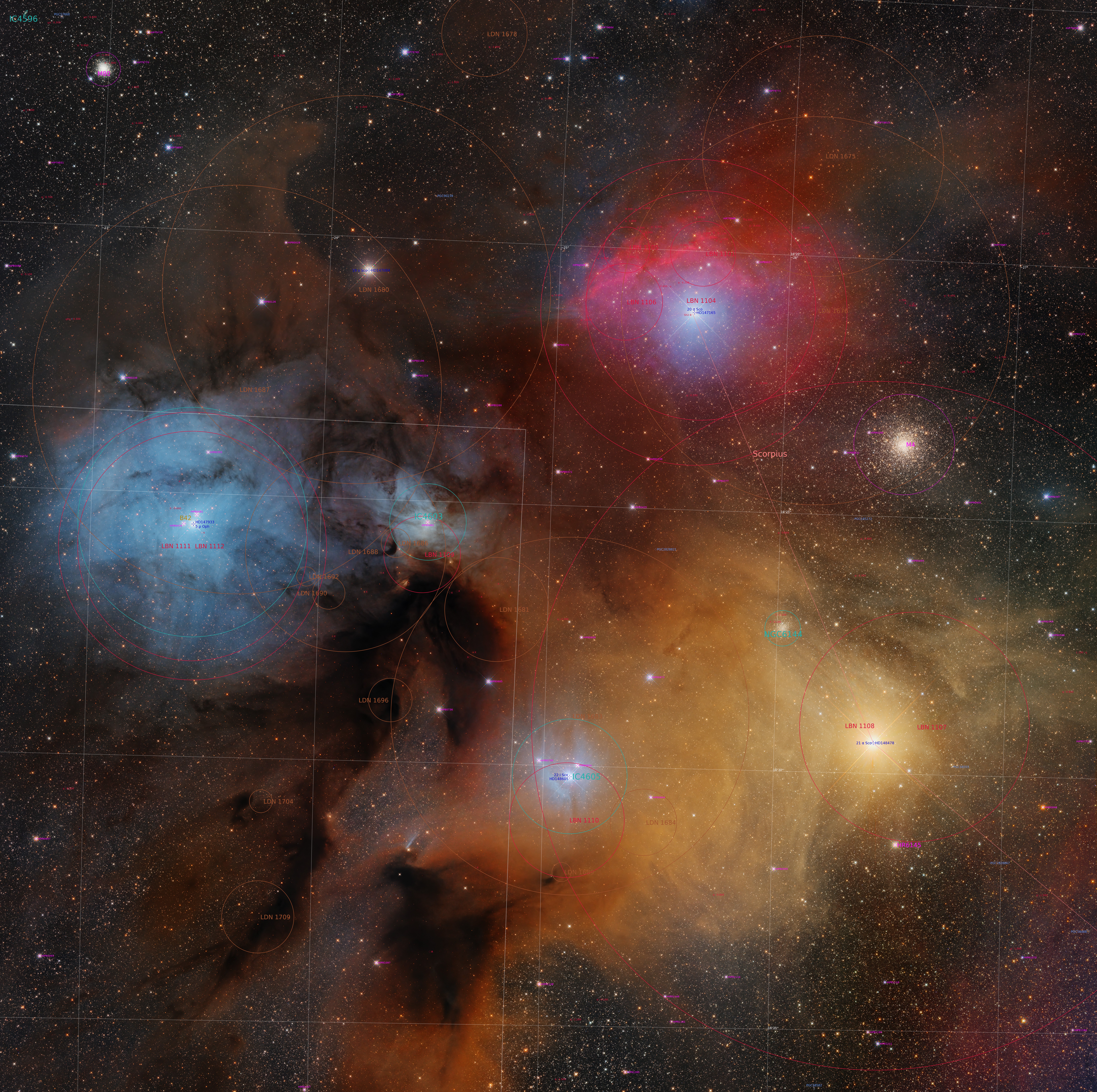
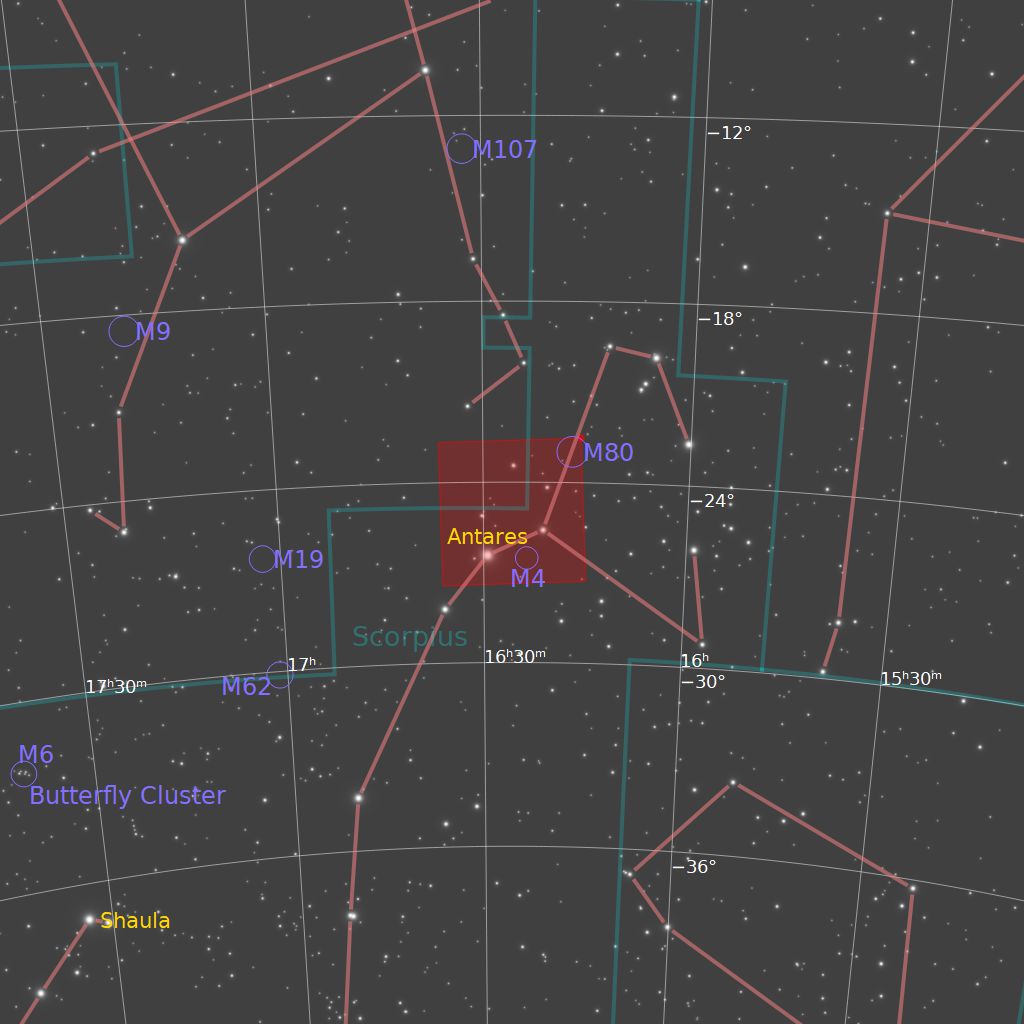
The Antares and Rho Ophiuchi Cloud Complex – A Cosmic Jewel for Astrophotographers
The Antares and Rho Ophiuchi cloud complex is one of the most colorful and visually striking regions in the night sky. Located approximately 400-500 light-years away, this vast molecular cloud structure stretches across the constellation Ophiuchus and Scorpius, near the bright red supergiant Antares. It offers a spectacular blend of reflection, emission, and dark nebulae, making it a prime target for wide-field astrophotography, especially from dark skies with short focal length setups.
Key Features of the Region
1. Antares (α Scorpii) and Its Surrounding Nebulosity
Antares, a red supergiant nearing the end of its life cycle, illuminates a bright, yellowish-hued reflection nebula (IC 4606). Its intense stellar winds interact with the surrounding interstellar medium, shaping the dust clouds and creating a glowing halo of scattered light.
2. Rho Ophiuchi Nebula (IC 4604, IC 4605, and IC 4603)
The blue reflection nebulae surrounding the triple star system Rho Ophiuchi are some of the most well-known in astrophotography. Their striking contrast against the neighboring dark nebulae adds to the complexity of this field.
3. Dark Nebulae (Lynds Dark Nebulae - LDN)
The area is threaded with prominent dark nebulae, including LDN 1773 and LDN 1688, which appear as dusty tendrils obscuring the background starlight. These dense clouds are active sites of star formation and can be challenging yet rewarding to capture.
4. Emission Nebula Sharpless 2-9 (Sh2-9)
Just west of Antares lies Sh2-9, a faint but fascinating Hα emission nebula. It is energized by the nearby hot B-type star σ Scorpii, adding a reddish glow that contrasts beautifully with the cooler dust regions.
5. Globular Clusters Messier 4 (M4) and NGC 6144
Among the clouds of dust and gas, the ancient globular cluster M4 is a spectacular sight. Just 1.3° west of Antares, this cluster is one of the closest to Earth at ~7,200 light-years away. Another, NGC 6144, appears fainter but provides an interesting secondary target for high-resolution imaging.
Photographing the Antares Region with Short Focal Lengths
This expansive field of view makes it an ideal subject for astrophotographers using small refractors (50-200mm focal length), at longer focal length it is necesairy to create a mosaic, such as this image containing 6 panels of LRGB imaging. Some important steps in this process are:
Dark Skies Required: Due to the low surface brightness of the dark nebulae and faint reflection regions, this target benefits immensely from Bortle 3 or darker skies. The excellent Namibian skies at Kiripotib Astrofarm during Nambian winter are perfectly suited for this endeavor.
Long Exposures + Fast Optics: Fast optics (like the Takahashi Epsilon Hypergraph series) with deep exposures will enhance both depth and faint dust details.
Color Balance + Processing: The key to success of a mosaic processing is reproduceably processing of all mosaic tiles starting from gradient removal and color calibration. Processes combining the panels with adaptive distortion and gradient synthesis in frequency space help in creating a seamless result.
When photographed under optimal conditions, the Antares-Rho Ophiuchi complex reveals an incredible interplay of colors and textures, making it a rewarding subject for any astrophotographer aiming to showcase the beauty of the cosmos. Enjoy this 100 Megapixel mosaic image of our favourite region in thesky!
Imaged at Kiripotib Astrofarm, Namibia, Bortle 1.
-
Category
Composite Object
-
Coordinates
RA 16h 25m
DEC −24° 52′ -
Distance
140 pc
-
Apparent Mag
---
-
Equipment
Takahashi e130D
Takahashi EM-200 Temma2
QHY 294mm pro
-
Exposure
L: 120 x 180 s
R: 72 x 180 s
G: 72 x 180 s
B: 72 x 180 s
Total Integration: 16.8 h -
Publication Date
09.02.2025
